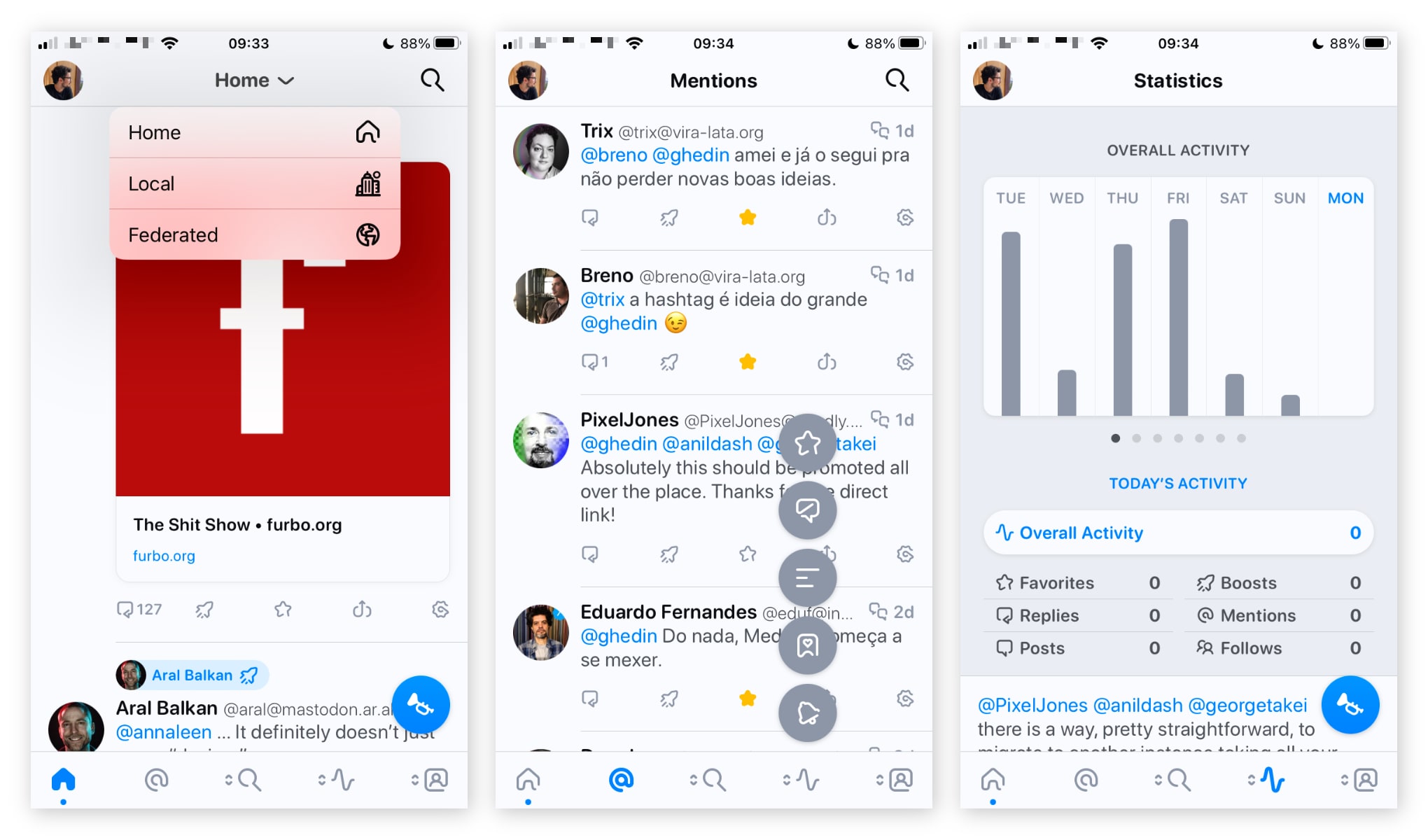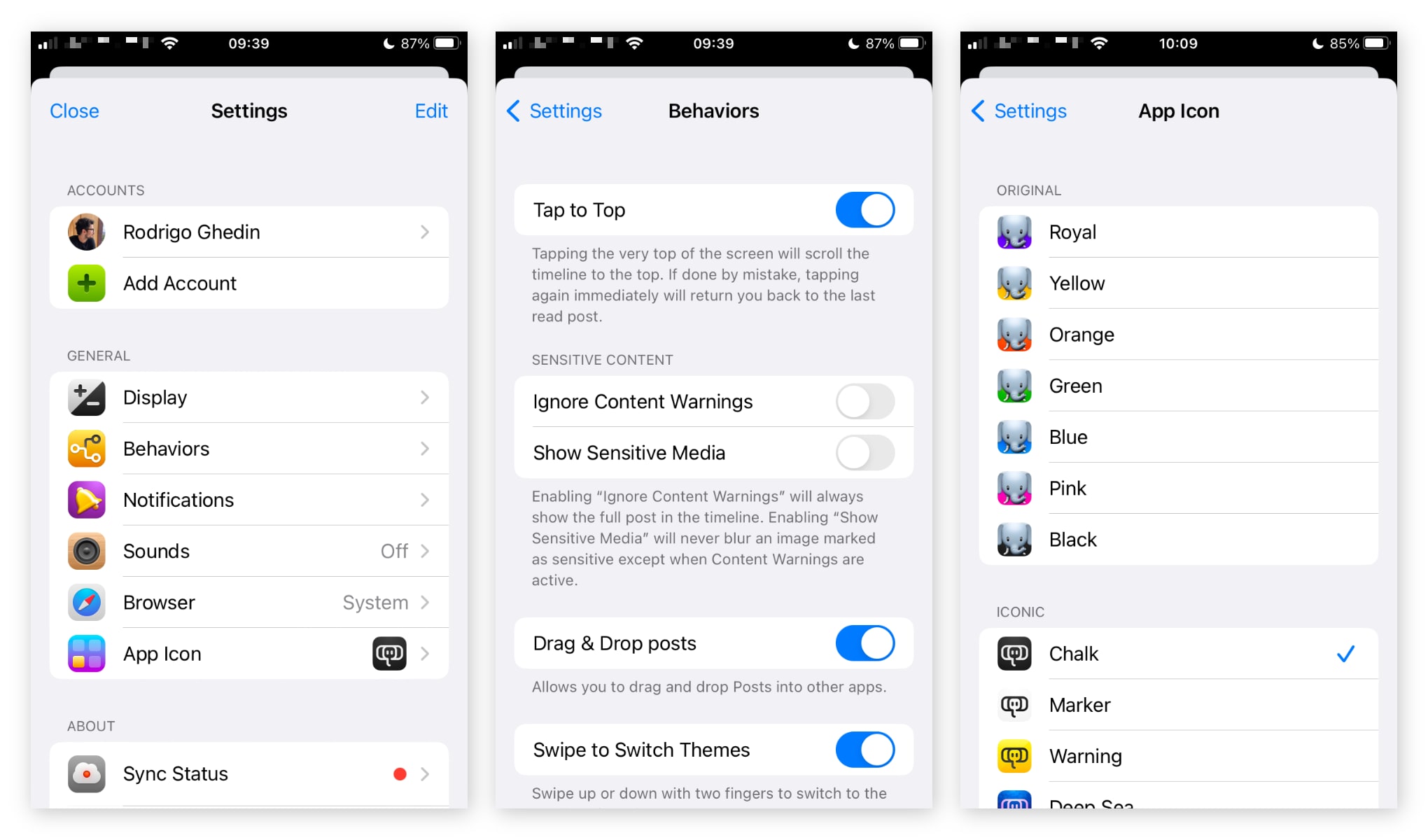16/1/2023
A Quick Look at Ivory, Tapbot's Mastodon App
From the same developers of Tweetbot, here comes Ivory: a marvelous Mastodon app for iOS.
Ivory is still in alpha, i.e., in testing and (supposedly) with some rough edges. Last Saturday (14), I got access to this test version, which I now present here.
The good news is that Ivory is very reminiscent of Tweetbot and, at the same time, assimilates well the peculiarities of Mastodon. It couldn’t be different: its base is the same as Tweetbot’s and Tapbots’ craftmanship in making great apps is well known.
When you open the app, you see the main timeline. Under the posts you see the typical action buttons — reply, retweet (here called “boost”), and favorite —, plus two “internal” buttons — the share sheet and a configuration button that brings things like bookmarks, translation, and post and profile details.
Gestures, inherited from Tweetbot, are present:
- Drag to the left to open the post in detail — see replies and meta data from it;
- Drag to the right to access quick shortcuts — favorite and reply by default; you can change these commands in the application settings.

Screenshots: Ivory/Rodrigo Ghedin.
One cool detail about Ivory is that it features Mastodon’s timelines — something that, weirdly, the official app has chosen to leave out. Unlike Twitter, where there is only one, Mastodon offers three:
- Home, the default, contains the posts of the people you follow in any instances;
- Local, which displays all the posts from everyone who is in the same instance as you; and
- Federated, which displays all posts from all profiles connected to your instance, i.e. everyone that at least one person from your instance follows.
At the bottom of the window is a main menu with five icons, two of them fixed (timeline and replies) and three customizable. To change one of these three, just hold your finger on it.
The areas available there are quite varied. The highlights are the bookmarks (a kind of “private favorite”, to save posts without notifying/alerting their authors) and the statistics, which brings a series of data about your behavior while using Mastodon.

Screenshots: Ivory/Rodrigo Ghedin.
The post button is floating. You can drag it to any of the four corners of the screen.
When you tap it, it displays the composing screen. Again, all the basic options are there, even the four levels of visibility that Mastodon offers.
Not everything is perfect and up to date so far. Ivory does not yet include editing posts, a feature that has existed in Mastodon since March 2022, nor the creation of posts with content warning.

Screenshots: Ivory/Rodrigo Ghedin.
Other features are absent, such as support for instance-specific emojis. All of these are on the developers’ radar. On Ivory’s website there is a list of these pending issues (“Current Roadmap”) which they promise will be fixed in the near future.
In the settings, you can add other accounts, change the behavior of the application and how it handles Mastodon features (for example, open all content warnings by default) and even customize details of the experience, such as the sounds (very tasteful, but I choose to disable them) and the app icon.

Screenshots: Ivory/Rodrigo Ghedin.
Ivory is still in the “alpha” stage, but it doesn’t look like it: in two days of use, I didn’t run into any errors and the app worked very well.
No word yet on when Ivory will be released. The recent breaking of Twitter’s API for third-party apps, including Tweetbot, should speed up the release of Ivory.
On Mastodon, Paul Haddad, one of the Tapbots developers, announced that Ivory’s development has gone into “hyper mode” in order to resolve the 3-4 mandatory fixes before submission to the App Store. On Saturday (14), Ivory’s profile reported that an early access version is expected to be released by the end of January.
Ivory will be paid, probably by subscription — just like Tweetbot. If the same pricing as for the Twitter app is used, we are talking about USD 0.99 per month or USD 5.99 per year.
A macOS version of Ivory is also being developed. It is not yet available or in testing and there is no release date planned.